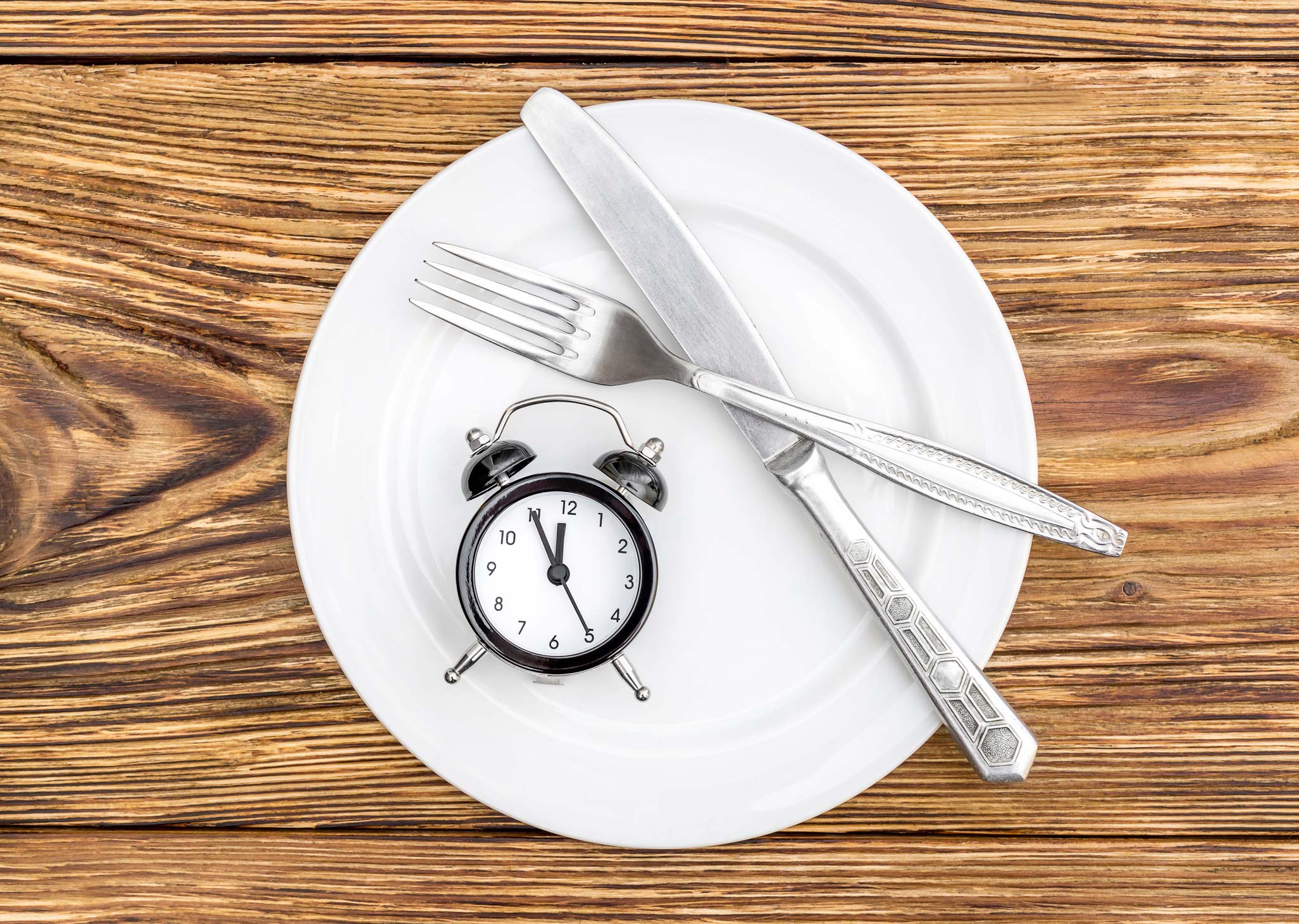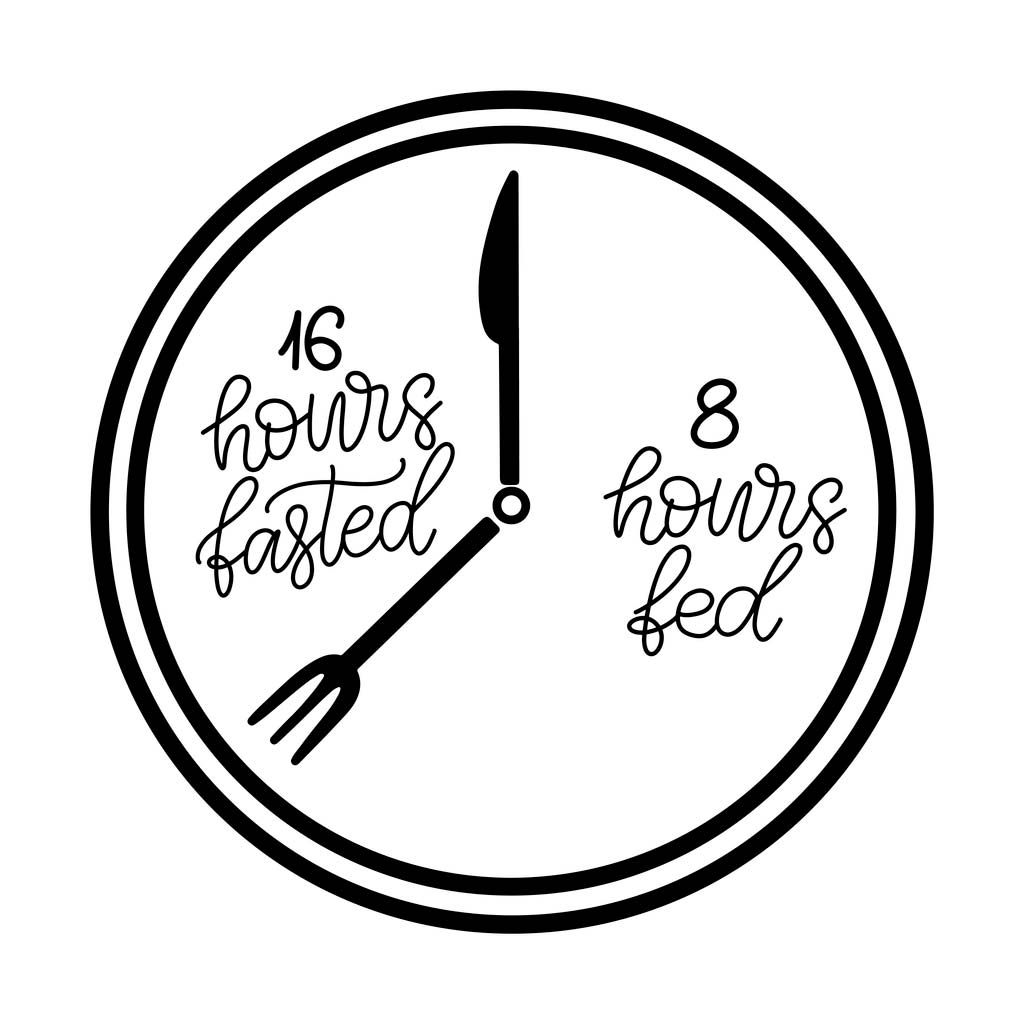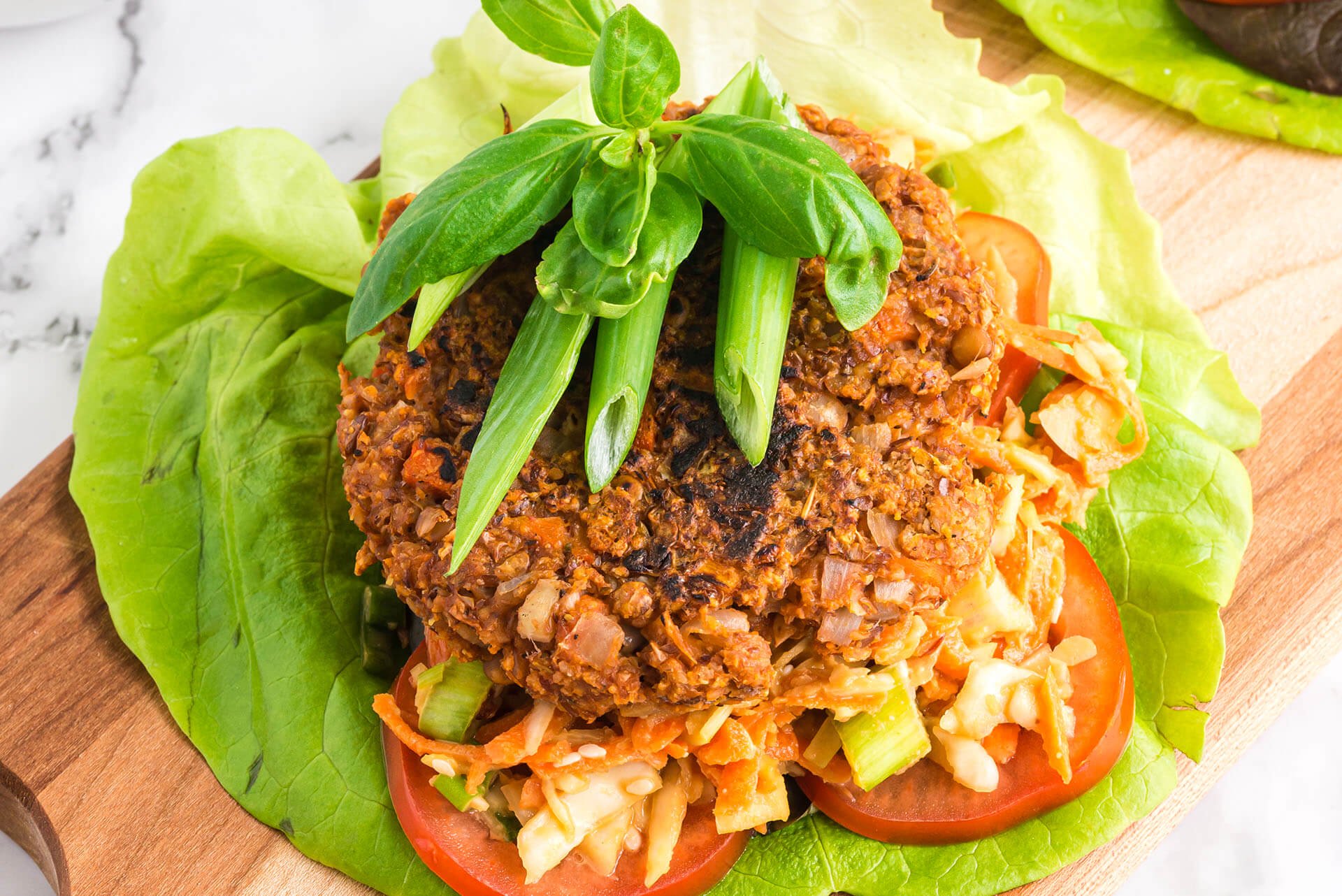Have you ever been on a diet? Weight Watchers, Mediterranean, DASH, MIND, Atkins, South Beach, Paleo, keto, macrobiotic, vegan, and others are focused on what you do or don’t eat — and/or how much. But what if another factor was also important to weight loss and health? Proponents of a modern-day wellness trend, intermittent fasting, claim to have found that factor: when you eat.
Interest in intermittent fasting has exploded over the past four years. Many celebrities swear by its ability to help them lose weight, have more energy, and feel better. Proponents claim that intermittent fasting can promote steady weight loss, prolong life span, and improve quality of life. You’ve probably heard of fasting — not eating for prolonged periods of time on purpose. But what exactly is intermittent fasting? Is it a diet? An eating pattern? A short-term hack, or a long-term lifestyle? In this article, we’re going to explore different approaches to intermittent fasting, as well as its potential benefits and risks. Think of this as Intermittent Fasting 101.
Brief History of Fasting
What are the origins of intermittent fasting? Humans, like many animals, have fasted for most of our existence on this planet. But instead of calling it fasting, for most of human history, it was called “going hungry.” Our ancestors often had a limited food supply and frequently had to go without food for long periods. For them, fasting wasn’t a health fad at all. Rather, it was a part of normal life — and sometimes, if it went on for long enough, a part of death.
Fasting by choice, on the other hand, has been a practice for thousands of years, generally for physical and spiritual renewal, as penitence for sins, or to develop self-control. Many religious traditions incorporate fasting, for as little as a day, but for as long as 40 days at a stretch. Fasting as a form of political protest in the form of hunger strikes is also common. And therapeutic fasting, specifically intended to treat or prevent ill health and chronic conditions, became popular in the 19th century.
Intermittent Fasting 101
Intermittent fasting (also known as time-restricted eating) is basically a schedule that divides your day into two parts: an eating window and a non-eating (fasting) window. By itself, this doesn’t sound particularly revolutionary. In fact, it’s what most of us would do automatically, without thinking about it.
Everyone practices some degree of fasting in our everyday lives. We all fast when we go to sleep at night. This is why we call the first meal of the day “breakfast,” as in “break the fast.” You also may have been asked to fast before a blood test as part of a medical exam or wellness visit. Often, this means delaying breakfast and prolonging your overnight fasting period until after your blood test.
So if we naturally fast intermittently, and have for most of human history, why do we need to give it a name and read books about it now? Because we now live in a culture in which most of us can eat large amounts of food whenever we want — 24/7. Cheaply. Conveniently. And ever presently. With smartphones, microwaves, packaged foods, and delivery apps, we can eat from morning to night, and through the night, so that we never have to go more than a couple of hours between meals. A dietary pattern enforced by the scarcity built into our environment is now one we have to choose on purpose.
Full-on fasting can last for days or even weeks at a time, but the non-eating window of intermittent fasting rarely lasts longer than 24 hours. During intermittent fasting, you can still eat food; you just have a scheduled window to do so between non-eating periods.
Other Reasons for Fasting
While many adherents of intermittent fasting seek its health benefits, there is a large group of people who engage in intermittent fasting as part of their faith. The Muslim holiday of Ramadan includes, as a central practice, fasting during daylight hours and eating only at night for 30 days, which is followed by a three-day feast. Some people do meditation or yoga in conjunction with periods of fasting because they claim it allows them to go deeper into their practice. Some proponents of intermittent fasting also find that practicing yoga feels better on an empty stomach because it increases awareness of internal organs and enhances the physical space for flexibility within the body.
Types of Intermittent Fasting
There are many intermittent fasting protocols. Some of the most popular include:
12/12 Method
This is the easiest method for people who are completely new to the practice of fasting, as it most similarly mimics how you might already be eating. This approach involves fasting for 12 hours — usually overnight during sleep — and fitting all of your eating into the other 12-hour window of the day. A common 12/12 schedule involves eating from 7 am to 7 pm, and then fasting from 7 pm until the following morning. This method is great at curbing late-night eating, which typically is the time when people make the least healthy choices. And night-time eating can interfere with sleep quality and brain health. If you go to sleep on a full stomach, your body has to split its energy between digestion and all the things your brain does during sleep, like cleaning, repair, dreaming, and memory consolidation.
16/8 Method
This is the most popular form of intermittent fasting, which includes an 8-hour eating period and a 16-hour fasting period. While that might sound arduous, remember that most people sleep through a large chunk of the fasting period. Within the 8-hour eating window, most people can fit in at least two or three meals. For example, you might eat breakfast at 9 am, lunch at 1 pm, and finish dinner by 5 pm. A two-meal version might include breakfast at 7 am and a large meal that concludes by 3 pm, or brunch at 11 am with dinner finished by 7 pm. This method is also called the Leangains protocol, which was popularized by fitness expert Martin Berkhan.
Alternate Day Fasting
In the alternate-day fasting method, you fast every other day, keeping to your normal eating pattern on the other days. This method can occur in a couple of ways. Some of them allow around 500 high-nutrient calories to be consumed on the “fast” day, while others call for nothing but water on fasting days.
5:2 Diet
The 5:2 Diet is also called the Fast Diet, which was made popular by Michael Mosley, a British journalist. Rather than completely abstaining from eating food during any set fasting window, you instead dramatically limit your calories for a period of time. This approach is called the 5:2 Diet because you eat normally for five days of the week. On the other two days — which do not need to be consecutive — women limit their calories to 500 for the day, and men limit theirs to 600 for the day.
24-Hour Fast
This method is also referred to as Eat Stop Eat. It involves eating no food for 24-hours at a time, usually once or twice per week on days of your choosing. Alternatively, you can eat one large meal for the entire day, and then not again until the next day at that same time — with 24 hours in between.
Warrior Fast
This method, which involves fasting for 20 hours and eating all your daily food in a 4-hour window, is also called the 20-Hour Fast. It was made popular by Ori Hofmekler, author of the book The Warrior Diet. The Warrior Fast involves eating small amounts of raw fruits and veggies during the day, as well as one large meal at the end of the day. It also specifically involves avoiding processed foods.
Which Fasting Method is Best?
The truth is that there haven’t been many studies conducted yet that compare the results of these different fasting methods. We do know that insulin sensitivity is highest in the morning and that most people sleep better with a relatively empty stomach. So it might make more sense to skip dinner than to skip breakfast, or at least to ensure that the last meal of the day is wrapped up a few hours before bedtime. But that’s a guideline, not a rule.
Even if a study were to find that most people do better with a certain eating rhythm, that wouldn’t necessarily mean that you would have the same experience. You aren’t most people: You are the only you in the world. If you do decide to experiment with intermittent fasting, you might want to try a few different approaches, over time, and see what works best for you. And that might depend, in part, on what it is that you’re hoping to achieve.
Many people who are just starting out find it best to start intermittent fasting with a gentle approach, like the 12/12 method. And then if that works out, they can ease their way into experimenting with more aggressive methods like 16/8 or alternate-day fasting.
6 Health Benefits of Intermittent Fasting
Intermittent fasting offers a number of potential health benefits, many of which have scientific evidence to support them. Some of the most well-researched benefits are listed below.
1. May support sustainable weight loss.
According to a 2019 review published in Current Obesity Reports, nearly all studies done on intermittent fasting have found it’s beneficial for some degree of fat loss, ranging from 2.5-9.9%. Some research suggests this is because intermittent fasting may improve the balance of some fat-burning hormones in the body, boosting metabolism to promote weight loss. However, other studies conclude that the fat loss associated with intermittent fasting is explained by the caloric restriction that almost always accompanies it and that it is not any more effective for weight loss than restricting caloric intake.
2. May extend your lifespan.
Intermittent fasting potentially increases longevity in some ethically dubious animal studies. In these studies, researchers observed improvements in biomarkers of lifespan, such as reduced core temperature, increased resting metabolic rate (RMR), and lowered insulin levels among rats. Prolonged calorie restriction also alters gene expression in the muscle, brain, and liver, including genes involved in oxidative damage. A 2005 study published in The American Journal of Clinical Nutrition found that short periods of alternate-day fasting also increased lifespan and reduced fat mass among non-obese rats.
3. May improve insulin sensitivity.
A 2014 study on humans, published in Translational Research found that intermittent fasting lowered blood sugar by 3-6% and fasting insulin levels by 20-31%. Another study, published in the World Journal of Diabetes in 2017, found that patients with type 2 diabetes who practiced intermittent fasting experienced improvements in body weight, fasting glucose, and postprandial (after a meal) variability.
4. May have protective benefits for your heart.
Intermittent fasting may improve markers of heart health as well. For instance, a 2018 study published in Cell Metabolism studied the effects of early fasting periods on men with prediabetes, finding that it improved their blood pressure. And a study published in the American Journal of Clinical Nutrition concluded that intermittent fasting may lower “bad” LDL cholesterol, blood triglycerides, inflammatory markers, blood sugar, and insulin resistance — all risk factors for developing heart disease.
5. May improve your sleep habits.
Practicing intermittent fasting may also help you sleep better by having a positive effect on your body’s natural circadian rhythm. During periods of fasting, your body undergoes repair and rejuvenation that are linked to a longer lifespan.
6. May improve the health of your gut.
Your digestive system may also benefit from getting periodic breaks. Studies suggest that it might improve gut health and even longevity. Other studies have demonstrated that intermittent fasting can promote the beneficial reaction of white adipose browning and decrease obesity by changing the gut microbiota in positive ways.
Risks and Side Effects of Intermittent Fasting
While you might experience a number of health benefits from intermittent fasting, there are also some potential downsides to consider.
A 2017 study published in the journal Behavioral Sciences found that unwanted side effects of intermittent fasting could include mood changes, feelings of extreme hunger, low energy levels and tiredness, obsessive thoughts about food, stress and tension, confusion, depression, anger, and overeating during feeding periods. Females may also experience interruptions in menstrual periods with intermittent fasting practices. People with lower body weights were most likely to report these side effects and experienced them within the first few weeks of fasting.
Because of these potential risks and side effects, there are certain people who are probably better off not doing intermittent fasting. You may want to avoid intermittent fasting, or to do it only under the guidance of a qualified healthcare professional if you have:
- An eating disorder
- Type 1 diabetes
- Medication-controlled type 2 diabetes
- Certain mental health conditions
- Conditions for which you take blood-thinning medications like warfarin
- Or if you are pregnant, breastfeeding, or have undergone a recent surgery
Some people simply just don’t feel good when they fast. If you experience persistent flu-like symptoms or other unwanted side effects when you go without food for an intentional period, you may want to seek support from a qualified healthcare professional or avoid fasting altogether.
What Can You Eat or Drink While Practicing Intermittent Fasting
What can you eat or drink while intermittent fasting? While there are several different approaches to intermittent fasting, there are also some standard guidelines to follow during feeding times and non-feeding times that you can apply to whatever method you choose.
- During Feeding Times: It won’t do you much good if you practice intermittent fasting and then drown out all your metabolic accomplishments in a sea of potato chips and donuts. No matter what your timing or rhythm is, unless you try to become a breatharian (yes, that is really a thing, or so some people claim), you’ll still be eating some of the time. And what you eat during that time will have an enormous impact on whether or not you get positive results. The rules of nutrition still apply while fasting: Avoid refined carbohydrates and animal products (especially from factory farms). And make sure that your meals are rich in nutrients — especially fruits and vegetables.
- During Fasting Times: When you’re in a non-eating period, you can drink water, coffee, tea, and other calorie-free beverages as these won’t interfere with your fasting. In particular, consumption of tea may reduce body weight and fat. Studies have indicated that the catechins in green tea might promote healthy levels of the hormone ghrelin, which in turn promotes satiety. Some meditation teachers also believe that it can increase mindfulness and the connection between body and brain. Other proponents of incorporating tea into their fasting practices say that it helps make fasting more manageable and enjoyable.
Recipes for Feeding Times
If you’re looking for some nutritious, balanced meals to incorporate into the eating portion of your routine, here are some nourishing whole food, plant-based recipes that you and your body can love.
1. Alfalfa Sprout-Topped Sweet Potato Avocado Toast
Replace your bread with nutrient-dense sweet potato for the beta carotene. And add even more super nutritious foods like avocado for its lutein, radish for its fiber, onion for its prebiotics, arugula for its folate, lemon for its vitamin C, and oregano for its flavonoids. Does it get any more healthful than this? The fact that it’s also ridiculously yummy makes it a perfect breakfast. Tip: Make the sweet potatoes ahead of time, so you can easily warm them up for ready-to-eat meals all week long. Bonus tip: Check out our article on sprouts and how to grow your own.
2. Lemon Miso Grain and Vegetable Bowl
This bowl is light while also really satisfying with its abundance of nutrients, pop of flavor, and high fiber content. One way to tell if a meal has a lot of nutrition is by counting the plant colors. Shoot for the rainbow each time you eat! The Lemon Miso Grain and Vegetable Bowl has green broccoli for calcium, red tomatoes for lycopene, red bell pepper for vitamin C, brown rice for B vitamins, and white garlic and ginger for lots of healing phytonutrients. (Okay, the last two weren’t necessarily colors of the rainbow, but you get our drift — variety is key!) Of note, this dish also boasts probiotics from the miso and optional kimchi for gut health.
3. Hearty and Healing Lentil Burgers
Since you might reduce the number of meals during intermittent fasting, you’ll want to make sure you receive plenty of fiber when you do eat. Fun fact: lentils pack 18 grams of fiber per cup! Other notable ingredients in this recipe that pack a ton of fiber include oats, carrots, and flax meal. Flax meal and walnuts also provide a decent amount of plant-based omega-3 essential fatty acids. As if the fiber and omega-3’s weren’t enough, these burgers also offer an abundance of iron, vitamin C, B vitamins, and zinc. This recipe makes about eight patties, so you’ll be able to enjoy it all week long!
Should You Try Intermittent Fasting?
Intermittent fasting is a popular health and wellness trend, and studies show that it might be helpful for weight loss, gut health, heart health, blood sugar balance, sleep, and even expanded life expectancy. But there are many different approaches, and it might not be beneficial for everybody. So as in all things, stay curious, pay attention, and use your own best judgment.
Tell us in the comments:
- Have you ever tried intermittent fasting? If so, how did it make you feel?
- If you’ve tried intermittent fasting, what method did you use?
- What kinds of foods do you like to break a fast with?
Featured image: iStock.com/LIgorko











